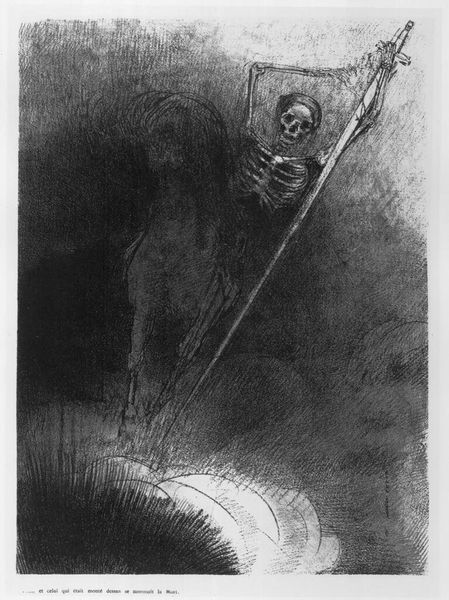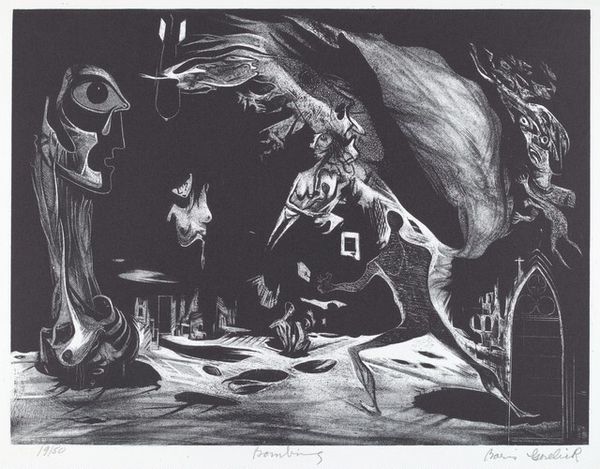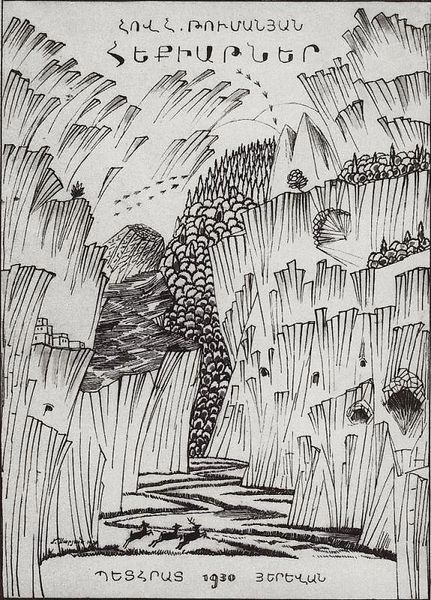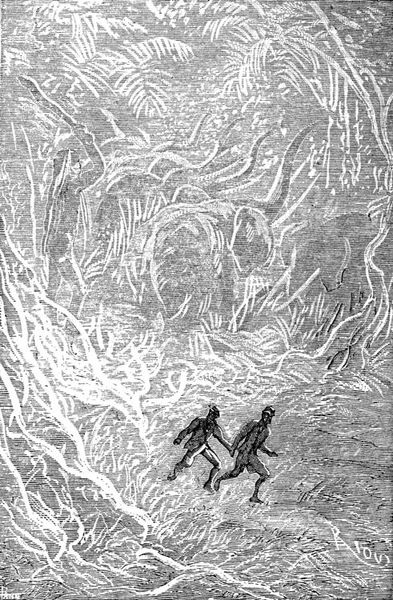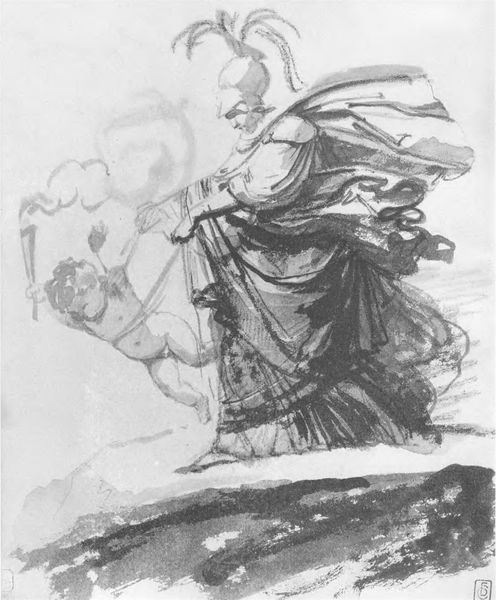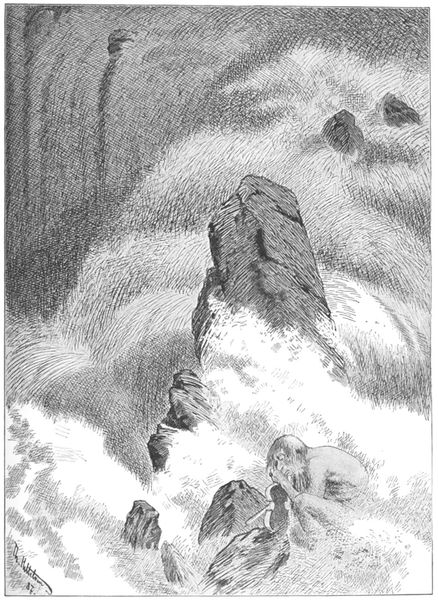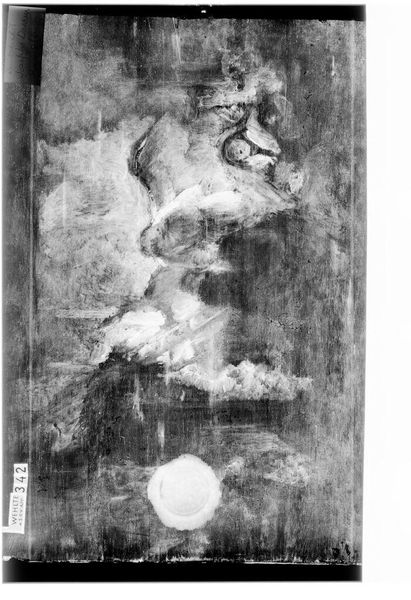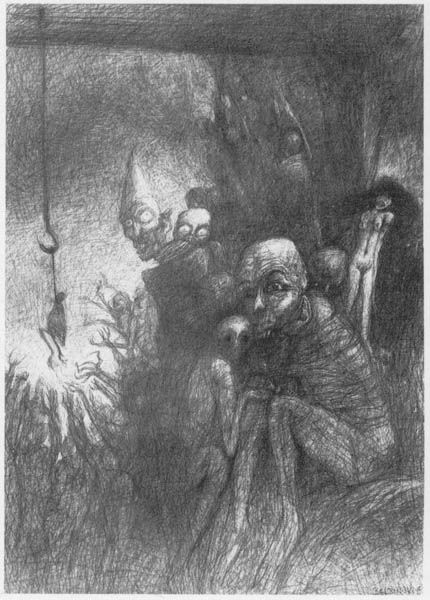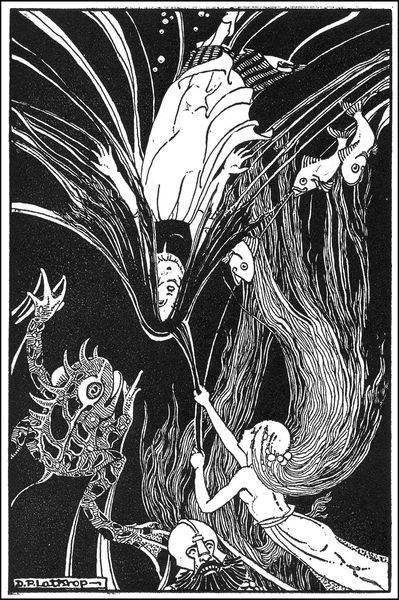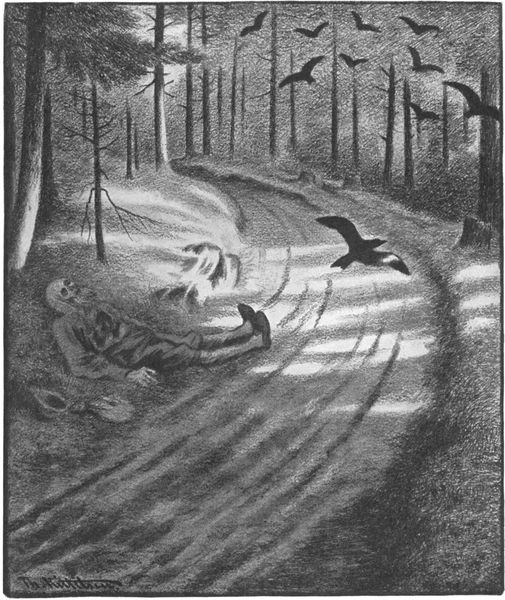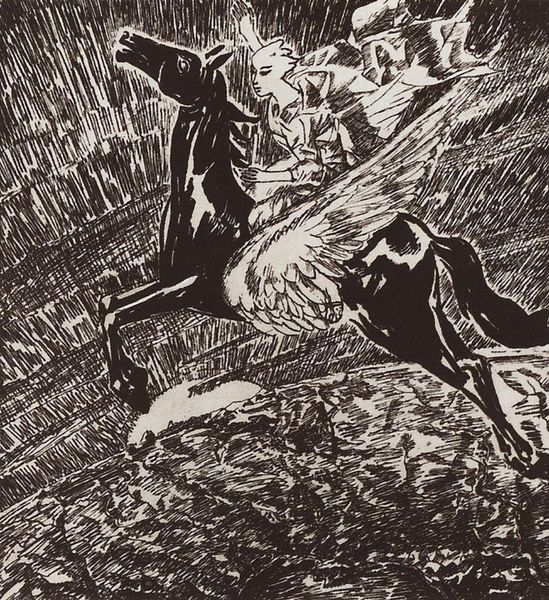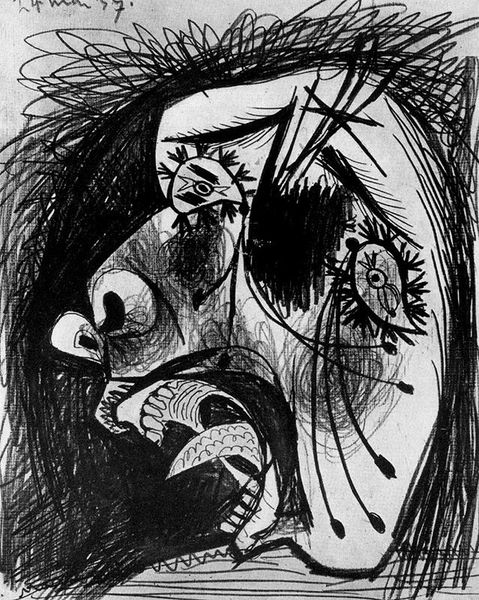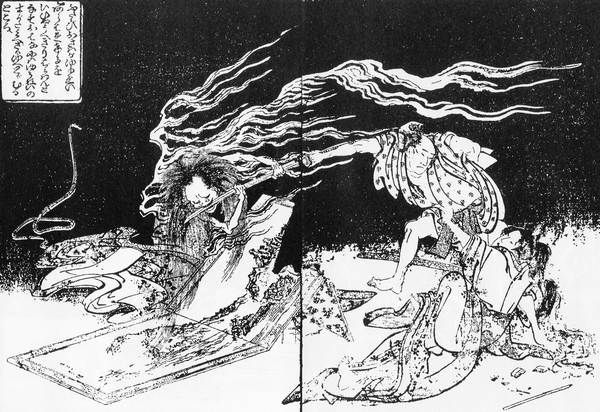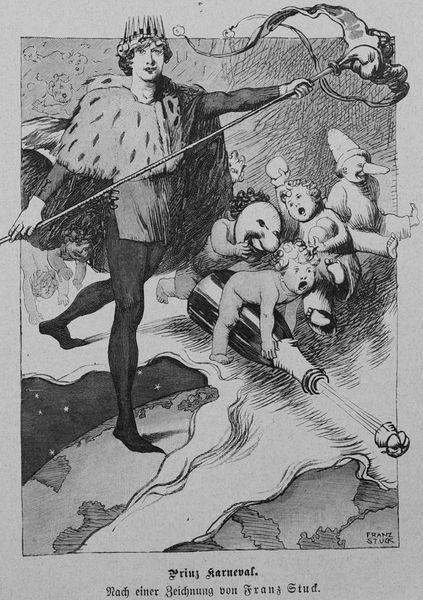
drawing, ink, pen
#
drawing
#
comic strip sketch
#
pen illustration
#
fantasy-art
#
junji ito style
#
figuration
#
ink line art
#
linework heavy
#
ink
#
sketchwork
#
pen-ink sketch
#
thin linework
#
symbolism
#
pen
#
fantasy sketch
#
initial sketch
Copyright: Public domain
Curator: This arresting pen and ink drawing is titled "I Spindervevet" by Theodor Severin Kittelsen. There is no recorded date. Editor: A primal, claustrophobic dread permeates this piece. It's like being caught in a nightmare you can't escape, heightened by the stark contrast of the white drawing against, seemingly, nothing but black ink. Curator: Absolutely. Look closely at the labor involved, the density of ink strokes creating this palpable tension. Consider the socio-economic implications here. Is it a comment on being trapped in one's circumstances, or societal expectations—the threads of the spider's web symbolizing societal control and the character as an observer of production? Editor: The density and direction of the lines do everything here. See how they converge towards the grotesque face peering from the darkness. And how, with a delicate but consistent lightness, the artist evokes three looming figures or phantoms as if emerging out of nowhere? I sense those details were carefully selected in light of their evocative, visual weight. Curator: Interesting how you bring it down to formalism alone, ignoring the very apparent societal forces that come into play when portraying class, labor and the subjugation of men by it. How else can we account for the looming, ghostly specters or that face of authority, looming menacingly from the shadows above? Editor: Are you saying all readings should only occur under the lens of class struggle? I appreciate the class conscious reading, but cannot it be that the looming, ghostly figures, whatever they mean to us, exist as the symbolic byproduct of visual choices: their pointed shapes, how they are suspended, etc. The way the figure reclines is no more symbolic than his positioning, size, and angle is carefully laid out to be caught. Curator: Perhaps, but the context of late 19th-century Norway, grappling with industrialization and class divisions, it seems incredibly pertinent that this artwork resonates with anxieties about the human condition. To simply consider form, materiality without exploring societal relevance does this ink injustice. Editor: Fine, but let's consider how Kittelsen transforms mundane materials—paper, pen, ink—into a potent image capable of conjuring very powerful and emotional concepts. This combination is no doubt enhanced by its historical context and cultural understanding. Curator: It truly demonstrates how the humblest of materials, used consciously and pointedly, can elicit so many interpretations on society, authority and isolation, even across the ages. Editor: Ultimately, this drawing compels us to think deeply, as you put it, about its impact on many, if not all fronts of its consumption.
Comments
No comments
Be the first to comment and join the conversation on the ultimate creative platform.
